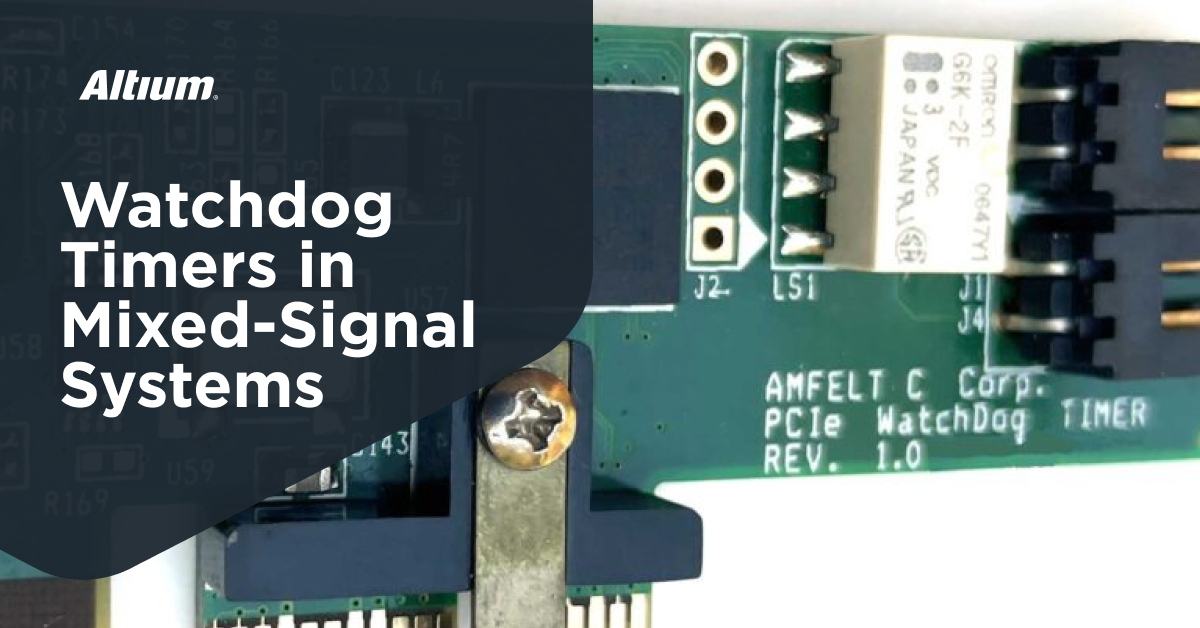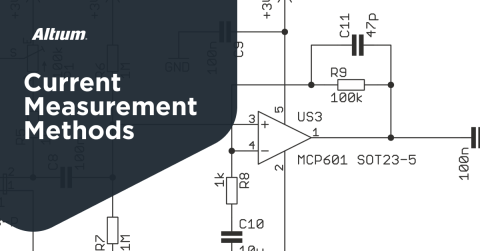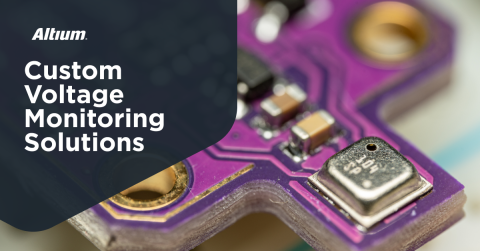Designing PCBs With a Custom Watchdog Timer

Modern electronics products are complex, with embedded software and custom circuits playing key roles in providing system functions. The complexity leads to problems like system hanging, unexpected software or firmware faults, or circuit glitches that require system resets. Sometimes, momentary system-level faults occur that disable a system, requiring a full reset without intervention from the user.
A watchdog timer is an ideal component for monitoring and resetting a system in the event of momentary faults, application errors, or circuit glitches. These devices are available as off-the-shelf ICs, but these components offer only simple monitoring that would be used as an accessory on small MCUs. In some cases, a custom watchdog timer is needed, which demands an MCU, FPGA, CPLD, or mixed-signal processor.
If your system needs fault monitoring, reset, and safe shutdown capabilities, then keep reading to see how to incorporate a watchdog timer into your design.
What is a Watchdog Timer?
A watchdog timer is a circuit (usually an integrated circuit) that monitors, and implements a procedure to recover from, hardware/firmware/software faults in an electronic device. The root cause of a fault is not so important, the watchdog timer’s job is two-fold:
- Detect whether a fault has occurred while periodically monitoring the system
- Perform the necessary shutdown or reset procedure
Some MCUs have built-in watchdog timers as standard features which can be enabled or disabled in the MCU vendor’s IDE or compiler. In other words, some MCUs can monitor their own functions and reset as needed.
In more complex systems, where the circuitry to be monitored is not a microcontroller, the watchdog timer is monitoring some other signal in the system as an indicator of proper functionality. For example, a watchdog timer can be implemented in hardware or firmware/software to monitor a fault indicator in a power system (e.g., power dropout), sensor network, or RF device (see below for a block diagram).
The system being monitored could have its own power sequencing requirements that form the reset procedure. The watchdog timer would then need to trigger the power sequence and possibly monitor the sequence for faults. This is an application that typically requires an embedded application or much more complex circuitry.
Watchdog Timer ICs
For simpler systems, there are watchdog timer ICs which can be used for monitoring. These are smaller components that are typically used as an accessory for MCUs which do not include a watchdog timer circuit. The commercially available watchdog timer ICs typically have the following features:
- Small number of pins (6 or 8) with a single input
- Single output for triggering system reset
- An enable pin for toggle the watchdog feature ON/OFF
For example, take a look at the SLG7WD47666 from Renesas. This simple watchdog timer has 5 pins with a single monitor input and a single reset output.
This type of component is a good choice for adding watchdog timer capabilities to an MCU, but it does not easily scale to more complex systems with various logic conditions required for fault detection. Monitoring a more complex system, implementing logical conditions for holistic fault detection, and toggling multiple reset sequences would take multiples of these watchdog timers in parallel connected to an MCU or FPGA. This takes up a lot of space on the PCB and uses up I/O pins on the system host.
Implementing More Complex Watchdog Timers
It is possible to implement a more complex watchdog timer using a programmable ASIC or processor. More complex watchdog timers have several important functions:
- Programmable clock and reset delay
- Multiple inputs for monitoring peripherals
- Multiple outputs for resetting peripherals
- Programmable logic to define logical conditions for toggling resets
Different components are better suited for these more complex watchdog timers, which I’ve outlined in the following table.
|
MCU |
FPGA |
CPLD |
Mixed-signal processor |
|
|
Programmable delay |
X |
X |
Varies |
X |
|
Programmable logic (hardware) |
X |
X |
X |
|
|
Programmable logic (application) |
X |
X |
||
|
Analog inputs (ADC, comparator, etc.) |
Varies |
X |
||
|
High I/O count |
X |
X |
Varies |
Varies |
When a large number of digital peripherals are being monitored based on complex logical conditions, an MCU or FPGA is the best choice. However, analog signals can also be monitored by a watchdog timer, and this would be much more desirable in power systems, sensor systems, and even in RF systems. This is where a programmable mixed-signal processor is the superior choice thanks to its CPLD-like configurability and built-in analog interfaces.
In a mixed-signal system, the only standalone component that can perform watchdog functions based on digital and analog inputs is the programmable mixed-signal processor. This implementation is similar to the typical watchdog timer implementation:
The difference between using a mixed-signal processor and an MCU, FPGA, or CPLD is that the monitored circuits can be analog circuits. Thanks to built-in analog comparators, ADCs, and programmable logic (D flip-flops and LUTs), logical reset conditions can be applied to digital and analog inputs, rather than just digital inputs. Furthermore, the mixed-signal processor is not the system host, meaning it has the capability to also restart an MCU/FPGA if needed.
Modern electronic devices like sensor interfaces and high-density power regulators rely on both digital and analog signals and require safety measures to ensure reliable system operation. The Renesas GreenPAK programmable mixed-signal processor product line is an ideal solution for building custom watchdog timers with no external circuitry required, enabling smaller and more efficient systems. To learn more, take a look at the GreenPAK components and reference examples.
Whether you need to build reliable power electronics or advanced digital systems, use the complete set of PCB design features and world-class CAD tools offered by Altium to implement your GreenPAK solutions. Altium provides the world’s premier electronic product development platform, complete with the industry’s best PCB design tools and cross-disciplinary collaboration features for advanced design teams. Contact an expert at Altium today!










